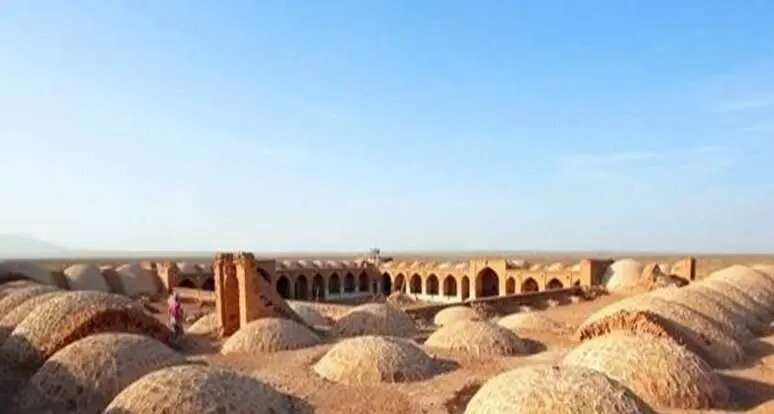17th-century Aveh caravansary undergoes restoration

TEHRAN —Restoration work has commenced on the 17th-century Aveh caravansary, one of the 999 massive inns constructed upon the order of Shah Abbas, the Safavid monarch, aimed to develop tourism and trade across Iran.
Experienced restorers have been tasked to renovate various sections of the caravanserai, including its chambers and arched rooftops that are meticulously laid out around a vast courtyard, CHTN reported.
Situated near Saveh in Markazi province, Aveh was a prosperous town during the Islamic era with its predominantly Shia population.
According to the results of the last season of excavation, about 110 hectares of this historic city have been buried under the ground, including caravanserai, reservoirs, bazaars, and other important historical layers, a local official has said.
“Aveh’s Shah Abbasi caravanserai is a part of the site and about 70% has already been repaired and restored. However, due to limited funds, the restoration will be done in phases.”
During the Mongol era, the historical site was abandoned for unknown reasons, and after years and due to weather factors, it eventually collapsed into rubble and was buried, the official explained.
Caravanserai or caravansary is a compound word combining “caravan” with “sara”; the former stands for a group of travelers and the latter means the building. They often had massive portals supported by elevated load-bearing walls. Guest rooms were constructed around the courtyard and stables behind them, with doors in the corners of the yard.
Passing major roads in the country, one may see crumbling caravanserais, many of which were abandoned for ages. In the Information Age, such guest houses have largely lost their actual usage.
They often had massive portals supported by elevated load-bearing walls. Guest rooms were constructed around the courtyard and stables behind them, with doors in the corners of the yard.
Staying at or even just visiting a centuries-old caravanserai can be a memorable experience for many visitors to Iran because it allows them to experience the past and travel back in time. Narratives say it is not hard to fancy the hustle and bustle of merchants bargaining on prices, recounting their arduous journeys to one another while their camels chew hay!
The earliest caravanserais in Iran were built during the Achaemenid era (550 - 330 BC). Centuries later, when Shah Abbas I assumed power from 1588 to 1629, he ordered the construction of a network of caravanserais across the country. Such roadside inns were once constructed along ancient caravan routes in the Muslim world to shelter people, their goods and animals. The former Silk Road may be the most famous example dotted by caravanserais.
The Islamic Republic has submitted an inclusive dossier on its caravanserais to the United Nations Educational, Scientific, and Cultural Organization. The dossier comprises obligatory data about a selection of 56 caravanserais, which are scattered across the ancient land. And the shortlist includes qualified caravanserais located in at least 24 provinces.
AFM
Leave a Comment